Ik nodig je uit om te ervaren hoe ik vanaf mijn jeugd als Maasai-meisje ben opgegroeid tussen rituelen, natuur en dieren . We bieden een breed scala aan activiteiten, allemaal een ervaring op zich.
Besides our Maasai activities, we also have other educational cultural experiences.From our philosophy to connect; experience and learn. A wish from your study, profession, hobby or general interest… we would like to hear that we make it happen for you.
Below is a summary of experiences . Let us know what appeals to you.
Onze klanten beoordelen deze activiteiten vaak als een van de hoogtepunten van de vakantie.
Veel maasai-ervaringen worden georganiseerd vanuit mijn geboortedorp Endulen bij de Ngorongoro-krater. Het is zeker de moeite waard om kennis te maken met deze hedendaagse Maasai gemeenschap. In de omliggende boma's l leer je veel over oude tradities.en ceremonies
Afhankelijk van het aanbod kun je deze Maasai-rituelen of ceremonies meemaken. (zie onderstaande foto's van klantbezoeken bij een ritueel en een geboortefeest. )
A village tour past school , listen to the story of young maasai girls who escaped early marriage and found themselves in school. If you want you can volunteer a few days at a maasai school or orphanage .
In onze cultuur kan een meisje op 15-jarige leeftijd trouwen. Huwelijken worden geregeld door de oudsten. Een huwelijk wordt uitgevoerd na initiatie van de jongen en het meisje en during the marriage ceremony, a big sheep or a bull is brought from the groom’s home and slaughtered. On the next day, everyone in the groom’s family gives them a cow, sheep and goats.. Polygyny is an ideal that is achieved by most older men.
Lokaal eten
- Have you ever wondered what people eat in Tanzania? Then you’ve come to the right place! Tanzanian cuisine is marked by tropical flavors and East African staples. Unfortunately, there is a misconception that East African food is bland and the regional diet is typically poor – this just isn’t true!
- De Tanzaniaanse keuken is zowel uniek als ongelooflijk gevarieerd, met een sterke Indiase invloed die in veel van de gerechten herkenbaar is.
- Langs de kust en in de hele Zanzibar-archipel is gekruid voedsel gebruikelijk, waarbij kokos het belangrijkste ingrediënt is.
- Regio's van het vasteland van Tanzania hebben ook hun eigen unieke lokale gerechten. Enkele typische gerechten van het vasteland van Tanzania zijn: wali (rijst), ugali (maïspap), chapatti (een soort tortilla), nyama choma (gegrild vlees), mshikaki (gemarineerd rundvlees), samaki (vis), pilau briyani en ndizi-nyama (bakbananen met vlees).
Groenten & Fruit
- Veelgebruikte groenten in Tanzania zijn: bamia (okra), mchicha (een soort spinazie), njegere (groene erwten), maharage (bonen) en kisamvu (cassavebladeren).
- Tanzania produceert maar liefst 17 verschillende soorten bananen, die worden gebruikt voor soepen, stoofschotels en frites.
- Vers fruit is het hele jaar door te vinden in Tanzania
VEGETARIAN DISHES
Een groot deel van de Tanzaniaanse keuken is vegetarisch of zelfs veganistisch. Degenen die zich onthouden van vleesproducten, kunnen tijdens hun reizen in Tanzania veel gezonde en stevige maaltijden vinden.
Mboga Majani:
Mboga Majani verwijst naar elke 'groente' en is een populair bijgerecht in het hele land. Spinazie, boerenkool, boerenkool, waterkers en meer worden gebruikt als groente voor een eenvoudige, maar gezonde kant. Ugali en greens zorgen voor een licht, eenvoudig diner, of voeg greens toe aan een ander hoofdgerecht om er een goed afgeronde maaltijd van te maken.
Bonen en rijst
- Waarschijnlijk de meest populaire combinatie over de hele wereld, de Tanzaniaanse versie van bonen en rijst kookt bonen typisch in kokosmelk voor een heerlijke, romige (en veganistische!) saus. Bonen variëren van rode bonen, kidneybonen, soja of black-eyed peas, afhankelijk van wat populair is in de regio.
- Als je de rijst niet wilt, probeer deze dan door chapati te vervangen en geniet van je bonen met knapperig plat brood.
Fruit salad:
- Als je op zoek bent naar een gezonde snack, probeer dan eens een fruitsalade! Verse papaja, banaan, ananas en meer worden met elkaar gemengd voor een verfrissende traktatie. Maar naast de typische tropische fruitsalade, bevat de Tanzaniaanse versie meestal wortelen en komkommers. Wees niet verbaasd als je een van beide in je fruitschaal ziet zitten, ze voegen allebei een extra laagje toe of zoet en knapperig en geven je fruitsalade een unieke Tanzaniaanse draai.
Maasai geloven in traditionele kruidengeneeskunde, waaronder planten, wortels van bepaalde bomen, en bladeren. Ze behandelen hiermee verschillende ziekten , waaronder buikpijn, artritis, malaria, obesitas ,en meer . Een patiënt die naar een genezer komt mag niet alle details van zijn probleem vertellen. Pas na enige tijd - misschien zelfs een nachtrust - komt de genezer terug naar de patiënt met een behandelplan. De traditionele genezer zal stenen opwarmen om in de pot te plaatsen met de kruiden. De patiënt legt een deken over het hoofd en inhaleert de stoom van de kruiden als behandeling. Dit proces kan enkele dagen duren. Afhankelijk van het probleem kan men zelfs tijdelijk naar de woning van de genezer verhuizen. Soms beschermen ze ook tegen familievloeken. Traditionele genezers worden erg gerespecteerd binnen de gemeenschap. Kom en maak de werkwijze van een een traditionele genezer van dichtbij mee !
The International Bagamoyo Arts Festival is het grootste en belangrijkste culturele festival op het vasteland van Tanzania. Het vindt jaarlijks plaats in de herfst en is een kleurrijke mix van muziek, theater, dans, acrobatiek, discussies en tentoonstellingen. Aan elk festival nemen enkele tientallen culturele groepen uit alle delen van Tanzania deel. Er zijn ook groepen uit andere zwarte Afrikaanse landen en af en toe gastgroepen uit Europa.
Sauti za Busara music festival in ZanzibarSounds of Wisdom is een pan-Afrikaans muziekfestival dat elk jaar in februari in Stone Town, Zanzibar wordt gehouden en dat duizenden muziekliefhebbers van heinde en verre aantrekt.
A d drive to Lake Eyasi. A home to the Hadzabe bushmen. Lake Eyasi is one of the few places remaining in Africa where tribal life is still maintained relatively untouched by the development of the region. The Hadzabe people have called Lake Eyasi home for more than 10,000 years, and still retain their hunter gatherer lifestyle; making them one of the last bastions of ancient African tribal life. A visit to the Hadzabe lands offers a unique and unforgettable glimpse into an ancient culture. This is the only place to find Bushmen a Tsar family of the Sahara Desert who moved to south Africa, but few remained inTanzania practicing Hunting and gathering and now live at Lake Eyasi
.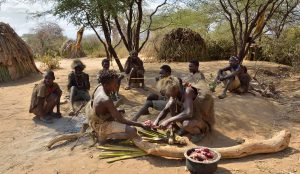
Dar es Salaam
Blijf een paar dagen in Dar s Salaam. We regelen een hotel of zelfs een door ons goedgekeurde Airbnb. We hebben onze eigen chauffeurs die u door de stad en naar de stranden zullen rijden.
De stad is geliefd bij reizigers vanwege de ligging aan zee en de eclectische sfeer dankzij de mix van Afrikaanse, Arabische en Indiase culturen
Tips voor ren bezoek
National Museum
Kiyukoni vis markt
Ook onderweg tussen de parken of in de parken zijn er verschillende mogelijkheden.
Voorbeelden hiervan :
– walk safari
– hikes to waterfalls
– bike or walk through the village of Mto Wa Mbu
– city tour Arusha
It was amazing
JOIN ME TO MY ROOTS "It takes one day to destroy a house; to build a new house will take months and perhaps years. If we abandon our way of life to construct a new one, it will take thousands of years", Maasai belief.
Maasai saying
Maasai rituelen en ceremonies
There are many ceremonies in Maasai society including Enkipaata (senior boy ceremony), Emuratta (circumcision), Enkiama (marriage), Eunoto (warrior-shaving ceremony), Eokoto e-kule (milk-drinking ceremony), Enkang oo-nkiri (meat-eating ceremony), Olngesherr (junior elder ceremony), etc. Also, there are ceremonies for boys and girls minor including, Eudoto/Enkigerunoto oo-inkiyiaa (earlobe), and Ilkipirat (leg fire marks). Traditionally, boys and girls must undergo through these initiations for minors prior to circumcision. However, many of these initiations concern men while women’s initiations focus on circumcision and marriage. Men will form age-sets moving them closer to adulthood.
Women do not have their own age-set but are recognized by that of their husbands. Ceremonies are an expression of Maasai culture and self-determination. Every ceremony is a new life. They are rites of passage, and every Maasai child is eager to go through these vital stages of life. Come and you will learn and experience one of these rituals….
Enkipaata
The first boy’s initiation is Enkipaata (pre-circumcision ceremony), and is organized by fathers of the new age set. Enkipaata can only happen, when the senior warriors are settled. More on senior warriors will be discussed later in this page.
Een delegatie van jongens, in de leeftijd van 14 tot 16 jaar, zal ongeveer vier maanden door het land van hun maasai gemeenschap reizen om de vorming van hun nieuwe leeftijdsgroep aan te kondigen. De jongens worden vergezeld door een groep ouderen die de leiding heeft over de vorming van een nieuwe leeftijdsgroep.
A collection of 30-40 houses are built for the initiating boys. The houses are located in one large kraal chosen by the Oloiboni (prophet). This is where all boys across the region will be united and initiated. Before the ceremony, the Olopolosi olkiteng, chief of the boys, must be chosen. Olopolosi olkiteng is a position not desired by anyone because it is considered unfortunate. The new chief is to shoulder all of his age group’s sins. The day before the ceremony, boys must sleep outside in the forest. When early dawn approaches, they run to the homestead and enter with an attitude of a raider. During the ceremony, boys dress in loose clothing and dance non-stop throughout the day. This ceremony is the transition into a new age set. After enkipaata ceremony, boys are ready for the most important initiation known as Emuratare (circumcision).
Circumcision ceremony is the most vital initiation of all rite of passages in the Maasai society. Both men and women of the Maasai society are traditionally eager to undergo through circumcision. This initiation is performed shortly after puberty.
It is important to note that with the rising challenges of the 21st century in the Maasai society, many young Maasai women no longer undergo through circumcision.
Jonge mannen willen nog steeds graag besneden worden en krijgers worden. Zodra de jongens krijgers worden, hervatten ze de verantwoordelijkheid voor de veiligheid van hun territorium.
Circumcision initiation elevates an individual from childhood to adulthood. In order for the boy to be initiated he must prove himself to the community. The boy must exhibit signs of a grown man, by carrying a heavy spear, herding large herd of livestock, etc.
A few days before the operation, a boy must herd cattle for seven consecutive days. Circumcision would take place on the eighth day. Before the operation, boys must stand outside in the cold weather and receive a cold shower to cleanse himself. As he moves towards the location of the operation, his friends, age mates and male members of the family shout encouragement along with nasty looks and sometimes threats. For example, people would tell the boy, “If you kick the knife, we will kill you! If you run away from the knife, your society will disown you. Women are luckier and are spared of such comments. Needles to say, circumcision is not pleasant. No pain relief drugs such as anesthesia, and you cannot flinch your eye. Circumcision is painful yet means a lot to every Maasai.
Tijdstip en plaats van de besnijdenis
Circumcision takes place shortly before sunrise. It is performed by a qualified man with many years of experience. After the operation is successfully completed, the boy would receive gifts of livestock from his relatives and friends. He would also gain a tremendous amount of respect for his bravery. Women’s operation is performed slightly different than the men’s. Note: Due to respect for my culture and its gender boundaries, as a man, I am not permitted to discuss details about women’s initiation.
Het genezingsproces duurt 3-4 maanden en jongens moeten gedurende een periode van 4-8 maanden zwarte kleding dragen . Nadat ze genezen zijn, zijn ze een nieuw persoon geworden en krijgen ze de status van een nieuwe krijger.
After circumcision, the next step is to form the Emanyatta (warrior’s camp).
Emanyatta contains twenty to forty houses randomly selected by warriors. The selection of this camp is sometimes a bit of a challenge. Not every elder would like his wife to be in an emanyatta, because it is a free visit zone for everyone. Jealous husbands are more likely to refuse to participate in the camp; they think that their wives’ former lovers will take advantage of her. Therefore, warriors sometimes fights with their jealous fathers. Weapons such as spears, clubs and shields are carried by warriors during this time because, occasionally, the battle can get very serious. Warriors will choose certain mothers to relocate at the emanyatta for the duration of its existence. Each Maasai section has its own age-set. The two most common camps are Ilaiserr and Irmolelian (clans); however, it is common for a section to have more than two emanyatta camps.
A special pole, planted in the middle of the camp, is used as a flagpole. The white and blue colored cloth, the Maasai nation’s flag, is tied to the pole before planting, and remains there as long as the Morrans (warriors) are still in the camp. (This is the first time in history for the age set to combine the Kenya national flag and the Maasai flag.) Two morran chiefs are chosen to lead, guide and represent their camp. The purpose of the camp is to keep men of the same age set together and fulfill their role as a military force. This is where the warriors learn about the age set brotherhood, the art of oratory skills and animal husbandry. They will spend up to ten years in the emanyatta before the Eunoto ceremony (senior’s warrior initiation).
Like many other eroding Maasai cultural customs, the emanyatta is not left unscathed. Many attempts have been made by the outside world to end this traditional custom because it is seen as backward. However, even though the government frowns on warrior hood, it also uses its image to attract tourists. The emanyatta ceremony that we presented in The Maasai and Agents of change is probably the last of its kind. Fire stick, honey and blue beads are other rituals performed in the Manyatta (warriors camp) and play an important role in the Orporror (morrans age group). After the emanyatta camp the warriors would head for eunoto ceremony (senior warrior’s initiation).
Eunoto
The Eunoto ceremony is performed by members of the age set, ten years after warriorhood. It marks the status of a warrior transitioning to a senior warrior. This initiation also permits senior warriors to marry, which in turn prepares them to become future fathers. The ceremony takes place in another specially chosen camp that includes a total of forty-nine houses. The forty ninth house is known as Osinkira, a large mud hut made specificaly for the Oloiboni. Warriors on a daily basis will entertain the Oloiboni until the event is over. Every graduating warrior must shave his long ochre-stained hair, which is done by the warrior’s mother. During the festival, warriors are prohibited to carry weapons such as sticks, spears, knifes, etc. Also, during this event, an animal horn is set on fire and warriors are forced to take a piece out before it is completely burned. No one wants to take the piece out, because whoever takes the horn out of the fire will suffer misfortunate throughout his entire life. However, if warriors refuse to take the horn out from the fire, the entire age-set will be cursed. It is better for one person to be unfortunate than many.
Warriors must raise eight bulls, before the ceremony, to be distributed to the elders at the graduation day. Three important leaders must be chosen by the warriors before the ceremony; Olaiguanani lenkashe, Oloboru enkeene and Olotuno (the initiate one). No one would like to be one of these leaders, particularly the Olotuno. This person shoulders all of his age set’s bad and good deeds. The Olaiguanani lenkashe is honored with a specially chosen female cow; Oloboru enkeene is honored with a leather strap with a knot that symbolizes his age set. By the end of warrior-hood, this knot will be untied to free the warriors from their isolated world. The knot allows warriors to do things independently from other age mates. This stage of life is a transition to an elder.
A few months after the Eunoto, warriors form a small camp for Enkang e-kule, the ,milk ceremony
Before the Eunoto ceremony, warriors are prohibited to eat alone without the company of others. Excuses are not accepted; even the sick must obey the requirement. To drink outside the camp is allowed but only if women are not present. Such social taboos are established by the Maasai to teach young men to be self-reliant rather than dependent on their mothers who mostly prepare food for her husband and the young ones. Also, such taboos train and prepare warriors to adapt to harsh environmental conditions such as famine etc. The milk ceremony requires the entire age set to shave their red ochre stained hair. It is the mother’s role to shave her graduating son. No warrior will shave his hair before his highly respected age set chiefs. Many of them prefer to graduate on the same day as their chiefs. For the first time, warriors feel awkward and shameful to eat in front of their female lovers. It takes a while for them to get used to this. After the milk ceremony, warriors undergo minor bouts of emotional stress, because they are disbarred from the world of warrior hood.
The next initiation is Enkang oo-nkiri (meat ceremony/initiation camp), which is performed in a selected camp that contains ten to twenty houses. The selected houses are from wives of the initiating junior elders. This camp is located in a convenient location near the home of a friendly age mate. The age-set is allowed to have as many meat camps as they need throughout the region.
The meat ceremony permits warriors to eat by themselves meat prepared by women of the homestead. Every graduating warrior is anxious to see this date. A specially chosen bull is slaughtered for the ceremony. A wife must prove to her husband that she hasn’t engaged in an illegal sexual affair with a man of the younger age set. Whether this has occurred or not will be revealed by participating in the bull’s skin ritual. Men wrestle with themselves to get near the bull’s skin to see if their wives have been unfaithful to the age-set. It is right for a wife to have affairs with men of the same age set but not outside the age set. If a woman is found guilty of violating such a commitement, she will be disrespected by her husband and by her entire age set.
For a woman to regain respect from her husband, she must go back to her father or relativ’s home to obtain a female cow. No man would refuse such an apology; however, the man might not keep the cow. he would then give the cow to his friend as a gift.
Aan het einde van de vleesceremonie strijden mannen en vrouwen met elkaar om het speciaal geroosterde vlees. Krijgers die hun leeftijdsgebonden taboes en wetten hebben geschonden, worden vooraf gestraft .
The last age set’s initiation is Orngesherr (junior’s elder initiation) and marks the status of a junior elder. It is performed in a selected camp that contains twenty or more houses. Every one in the age set looks forward to this final initiation. Every man is honored with an elder’s chair in this ceremony. In the early morning of the day of the event, he will sit on the chair and be shaved by his wife. If a man has more than one wife, it is the older wife’s responsibility to shave the husband. This chair becomes a man’s friend until it is broken. If a man dies before the chair breaks, his older son will adopt the chair. After this ceremony, a man would become an elder and would assume full responsibility of his own family. He is now allowed to move away from his father’s homestead and form his own homestead. However, even though the man is now an indipendent man, he would still have to rely on his father’s advice. A man would assume total responsibility of his family at the age of about 35 years.
Het is belangrijk op te merken d at veel van deze inwijdingen en rituelen zijn veranderd door invloeden van buitenaf. Ons Maasai wordt verteld onze manier van leven op te geven en de westerse manier van leven te omarmen envoor ons betrouwbaar en voldoende wordt geacht. Het voortbestaan van onze cultuur blijft onzeker in het licht van modernisme, westerse religie en milieu-uitdagingen.
“It takes one day to destroy a house; to build a new house will take months and perhaps years. If we abandon our way of life to construct a new one, it will take thousands of years”, Maasai belief.
Some exemples of our Maasai experiences
Maasai Ritual Orkiteng Lor Bar
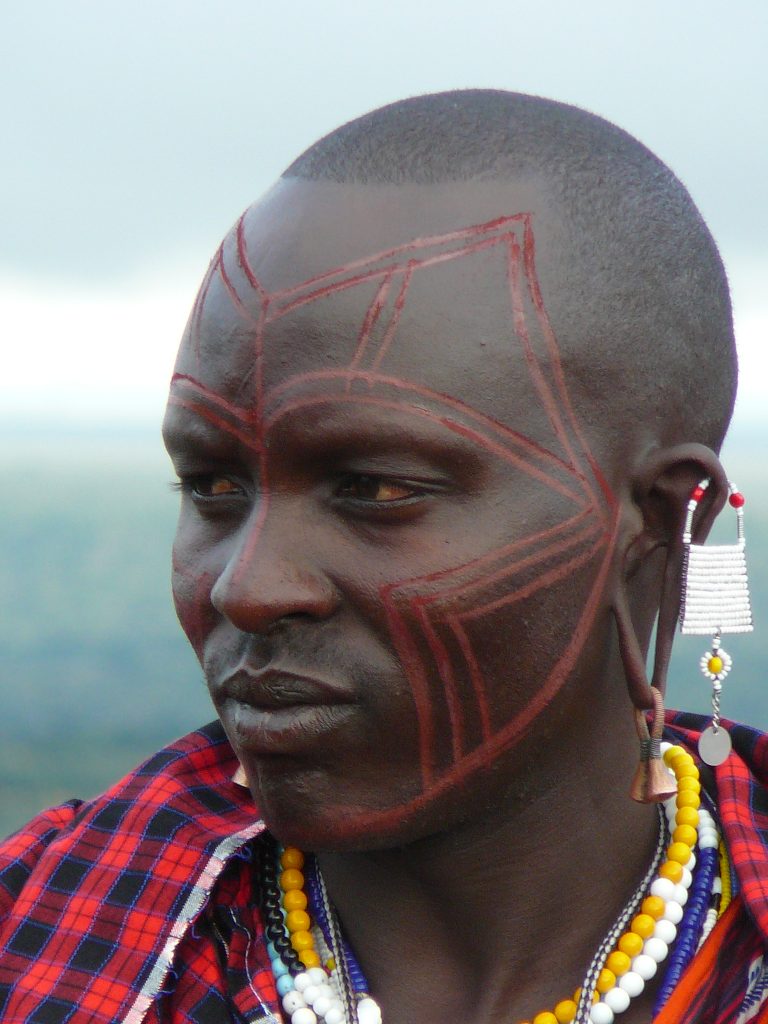

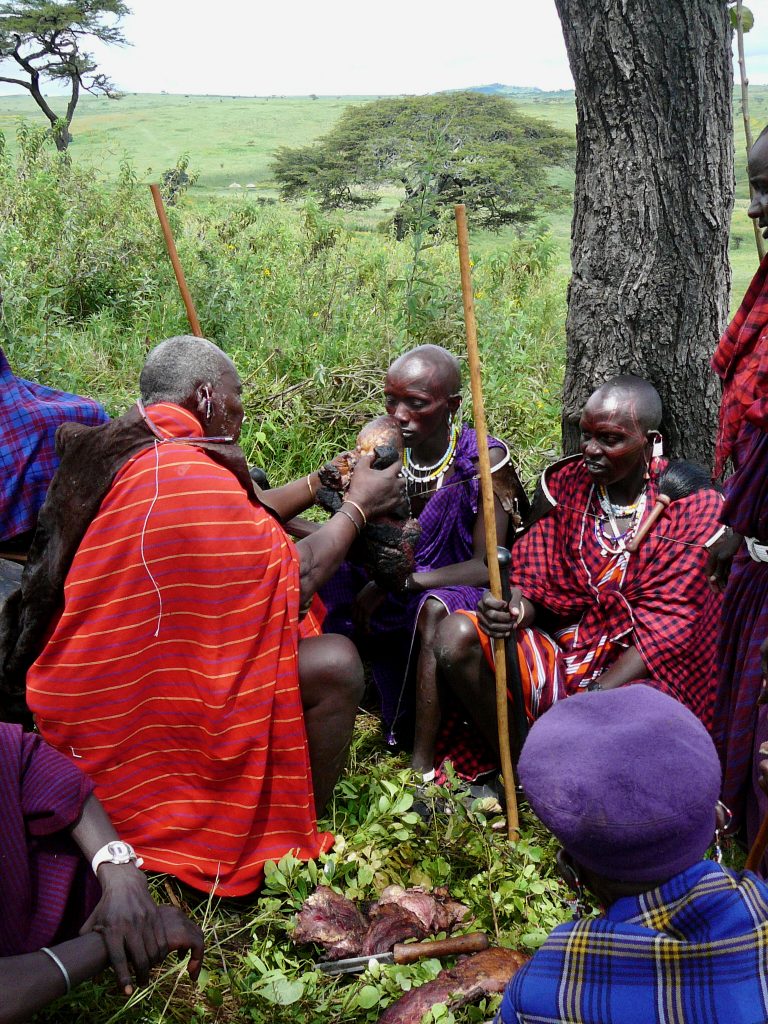
- De rituele ceremonie bekend als "Orkiteng Lor Bar", betekent het verhuizen naar een andere leeftijdsgroep. Een koe wordt geslacht, de vrouw van de man moet boven de koe zitten om te verzekeren dat ze haar man niet heeft bedrogen met andere mannen. Bijzondere belevenis om mee te maken.
MAASAI BIRTH PARTY.
Net als veel andere families hebben Maasai hun eigen cultuur om baby's en pasgeborenen te verwelkomen. De Maasai cultuur vereist dat een vrouw gedurende de 9 maanden zwangerschap voorzichtig en schoon moet zijn . Daarom zal een zwangere vrouw haar man pas bij de geboorte van het kind zal ontmoeten. Temeer n reden voor Maasai-mannen meerdere vrouwen hebben.
Wanneer een vrouw aan het bevallen is, wordt ze omringd door oudere vrouwen samen met de traditionele vroedvrouw. De vraag hier is waarom omringd door al deze OUDERE VROUWEN?
De belangrijkste reden hiervoor is om een “clean newborn” te krijgen. Een schone pasgeborene betekent dat zer ervoor zorgen dat ze alleen wordt bedekt door de echte "Vernix"( = mannelijk zaad ), De baby zal daarmee "schoon" zijn. Hoe weten ze dat het echt zo is? Volgens hen heeft het geen geur. Als toevallig de baby bedekt is met een vernix die ruikt, bepalen de oudere vrouwen dat deze baby niet "schoon" is.De moeder zal worden gevraagd wie dit heeft veroorzaakt ... als het de echtgenoot is, dan zal de echtgenoot (die tijdens dit proces buiten zit) worden geslagen door de dames. Als het vuil van een andere man is, dan zal de vrouw worden geslagen, naar haar ouders worden gestuurd en zal ze een babykoe terugbrengen om haar huwelijk te herstellen... Heel apart !!!!
Als de baby "schoon" is, alle de dames zullen luid schreeuwen en de pasgeborene vieren. Na de geboorte moeten er twee geiten worden geslacht zodat de vrouwen in de buurt samen kunnen eten en feestvieren. Een vrouw is 2 tot 3 maanden in kraamtijd , er worden geiten en koeien voor geslacht , ze drinkt soepen en traditionele medicijnen om haar kracht te herstellen.
Birth Party
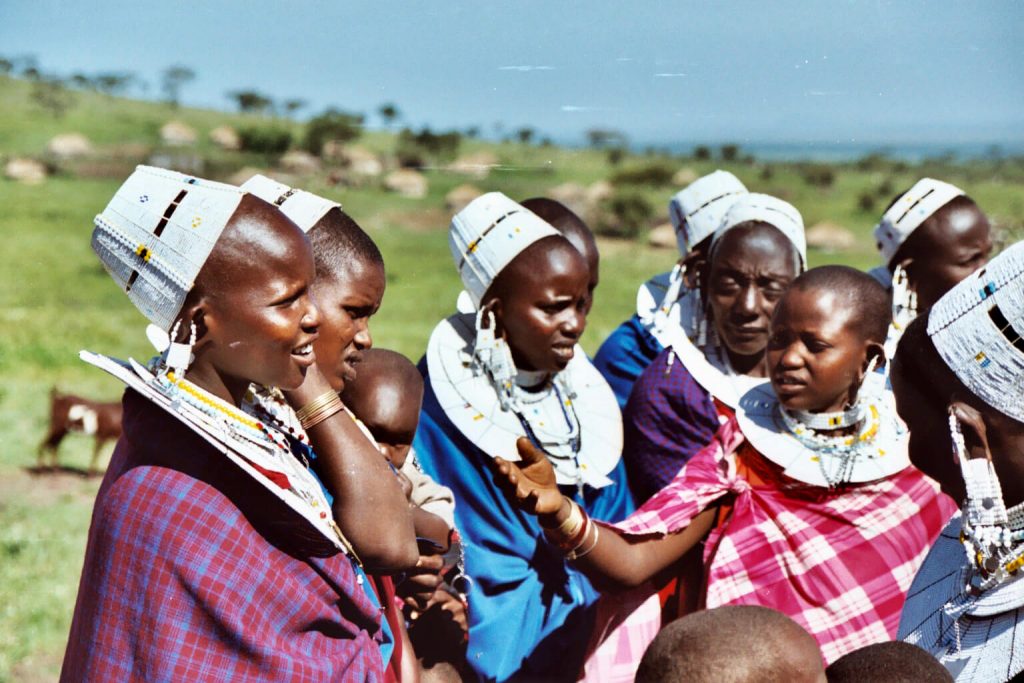
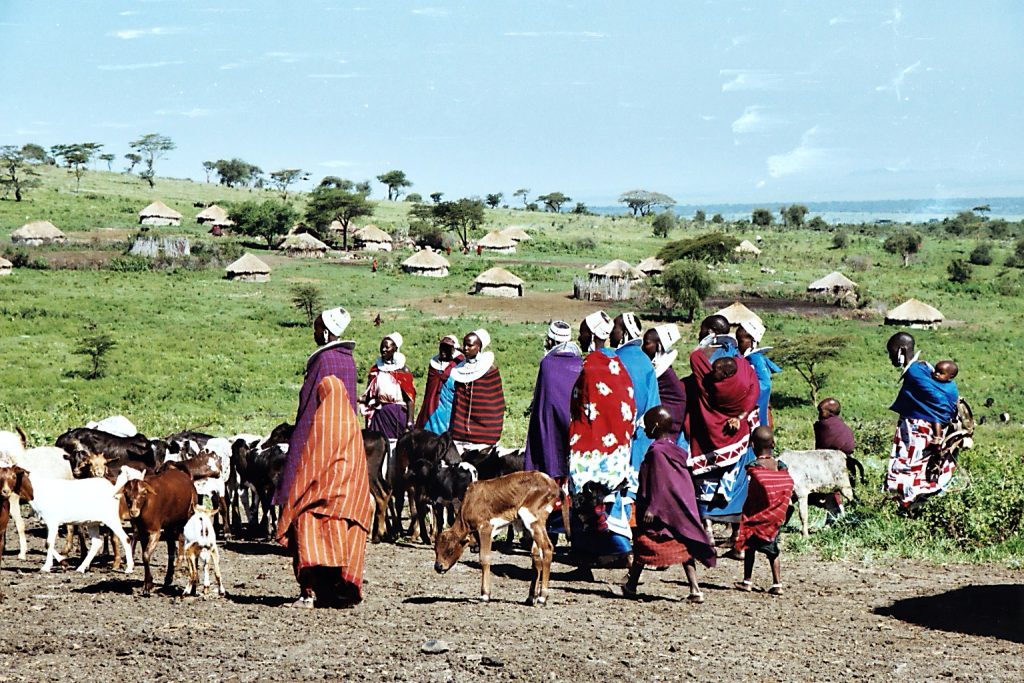




Maasai Markt

